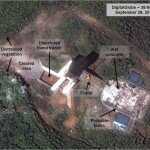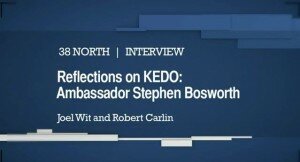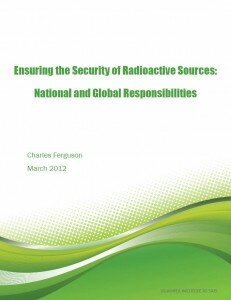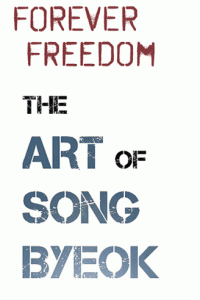Published on May 2, 2013
The U.S.-Korea Institute at SAIS (USKI) and the Global America Business Institute (GABI) are pleased to invite you to a speaker and discussion series featuring presentations on subjects relevant to the 123 Agreement between the US and South Korea:
Next Discussion
US 123 Agreements: Perspective of the Nuclear Industry
Guest Speaker: Amir Shahkarami, Senior Vice President and CEO, Exelon Nuclear Partners
Amir Shahkarami is Senior Vice President of Exelon Generation Company and CEO of Exelon Nuclear Partners, where he is responsible for all domestic and international business development projects. He has nearly 30 years of experience in the nuclear industry, with ten years at Exelon. Most recently, he was Exelon Nuclear Senior Vice President of Technical Services, in which he was responsible for nuclear fuel, engineering, project management, license renewal, industry organizations, innovation, and Exelon Nuclear’s international exchange program. Prior to joining Exelon, Mr. Shahkarami held several key positions of increasing responsibility at Entergy at several nuclear sites and corporate for ten years. He received his bachelor’s and master’s degrees in Engineering from Tulane University, his MBA from Mississippi College, and his Ph.D. in Nuclear Engineering from Louisiana State University.
Monday, May 13, 2013
2:00 – 3:00pm
Rome Auditorium
1619 Massachusetts Avenue NW,
Washington, DC 20036
RSVP: To register, please contact Alan Ahn at or
202-499-7978
.
Published on April 18, 2013
Join us for a film screening of “Unfortunate Brothers: Korea’s Reunification Dilemma”, co-hosted by the Sejong Society of Washington, D.C., the Maureen and Mike Mansfield Foundation, and the David M. Kennedy Center.
Explore the historical and current issues surrounding Korea’s unification through this provocative documentary which follows Mr. Lee, a North Korean defector attempting to adjust to his new life in South Korea. Gain a deeper understanding of the circumstances and concerns with respect to Korean unification as you watch the story unfold.
This event will be held April 26, 2013 in the Rome Auditorium. Join us for a light reception at 6:30 PM with the film commencing at 7:00 PM.
For more information or to RSVP click here.
Published on April 26, 2013
Published on November 14, 2012
 While the North Koreans may have refrained from conducting a nuclear test and subsequent missile tests after their failed rocket launch in April 2012, recent satellite imagery shows that the North is still continuing development of their missile development and the launch pad at the Sohae Satellite Launching Station (Tongchang-ri). USKI’s 38 North was the first to report on these developments, analyzing imagery from DigitalGlobe. According to 38 North analysts, the North has conducted liquid-fueled rocket engine tests at the Sohae facility as recently as September, and has continuing improvements to the Sohae launch pad. Full analysis and satellite imagery can be found here: http://38north.org/2012/11/sohae111212/.
While the North Koreans may have refrained from conducting a nuclear test and subsequent missile tests after their failed rocket launch in April 2012, recent satellite imagery shows that the North is still continuing development of their missile development and the launch pad at the Sohae Satellite Launching Station (Tongchang-ri). USKI’s 38 North was the first to report on these developments, analyzing imagery from DigitalGlobe. According to 38 North analysts, the North has conducted liquid-fueled rocket engine tests at the Sohae facility as recently as September, and has continuing improvements to the Sohae launch pad. Full analysis and satellite imagery can be found here: http://38north.org/2012/11/sohae111212/.
Just after Barack Obama was re-elected to a second term as President of the United States and just a month before a hotly contested presidential race in South Korea, the developments at Sohae have reminded both candidates of why North Korea policy coordination in these new adminstrations is important and of the potential for provocations at the outset of the two Presidents’ terms.
See CNN coverage of the 38 North article here: http://www.cnn.com/video/#/video/world/2012/11/14/clancy-nkorea-rocket-test.cnn.
Published on July 19, 2012
USKI’s 38 North and Stanford University’s Center for International Security and Cooperation (CISAC) have launched new resources on the history of KEDO to help increase public understanding of what this project was and what it accomplished.
When the South Korean fast ferry Hankyoreh sailed out of North Korean waters into the cold wind and waves of the East Sea on the morning of 8 January 2006, it carried a sad and somber group of South Korean workers, ROK officials, and personnel from the Korean Peninsula Energy Development Organization (KEDO). These were all that remained of a decade long multinational effort transforming what in 1994 had been only a paper notion into a modern construction complex of steel and concrete. KEDO’s profile on the North Korean landscape was unmistakable, its impact on Pyongyang profound. Yet, real knowledge and understanding about the organization in public and official circles in South Korea, Japan, and the United States was terribly thin at the beginning, and remains so to this day. ~ A History of KEDO 1994-2006
 In conjunction with the release of CISAC’s new book, A History of KEDO 1994-2006–an oral history project meant to preserve what remains of the living memory about KEDO, of the thinking that went into setting up the organization, the efforts to coordinate plans and translate them to realities on the ground in North Korea, and the struggle to maintain a sense of sanity while KEDO was pushed and pummeled into disintegration–USKI’s 38 North launches a new video: “Reflections on KEDO.” In this video, Joel Wit (38 North founder and Visiting Scholar at the US-Korea Institute at SAIS), hosts a conversation with Ambassador Stephen Bosworth (former US Special Representative for North Korea Policy and current Dean of The Fletcher School at Tufts University) and Robert Carlin (CISAC Visiting Scholar), about their experiences with KEDO. All three were involved with KEDO at different times in its ten year history and provide insights into what it was like on the ground building this multilateral organization. They discuss some of the major challenges in dealing with the North Koreans, as well as the cultural learning curve faced by KEDO’s multicultural staff. From the perspective of direct experience, they examine both KEDO’s accomplishments and the opportunities missed by the organization’s abrupt termination. In the final segment, Ambassador Bosworth also reflects on the Obama administration’s North Korea policy and provides his views on how to improve relations with the North in the future.
In conjunction with the release of CISAC’s new book, A History of KEDO 1994-2006–an oral history project meant to preserve what remains of the living memory about KEDO, of the thinking that went into setting up the organization, the efforts to coordinate plans and translate them to realities on the ground in North Korea, and the struggle to maintain a sense of sanity while KEDO was pushed and pummeled into disintegration–USKI’s 38 North launches a new video: “Reflections on KEDO.” In this video, Joel Wit (38 North founder and Visiting Scholar at the US-Korea Institute at SAIS), hosts a conversation with Ambassador Stephen Bosworth (former US Special Representative for North Korea Policy and current Dean of The Fletcher School at Tufts University) and Robert Carlin (CISAC Visiting Scholar), about their experiences with KEDO. All three were involved with KEDO at different times in its ten year history and provide insights into what it was like on the ground building this multilateral organization. They discuss some of the major challenges in dealing with the North Koreans, as well as the cultural learning curve faced by KEDO’s multicultural staff. From the perspective of direct experience, they examine both KEDO’s accomplishments and the opportunities missed by the organization’s abrupt termination. In the final segment, Ambassador Bosworth also reflects on the Obama administration’s North Korea policy and provides his views on how to improve relations with the North in the future.
My personal conclusion was they [North Koreans] were very serious about what they were doing—the enterprise that we were involved in. This was not something just being done for show. For them, it was not just KEDO and the Agreed Framework and light water reactors, but it was clear for many of them this was important because it was setting a series of precedents for how North Korea could begin to engage with rest of the world in a more direct and active fashion. ~ Ambassador Stephen Bosworth, “Reflections on KEDO,” a 38 North interview
Find the 38 North video here.
Published on March 20, 2012
 With the 2012 Seoul Nuclear Security Summit just around the corner, the US-Korea Institute at SAIS is proud to announce the release of the full Nuclear Security Summit Working Paper Series. This eight-paper series discusses the history and goals of the Nuclear Security Summit (NSS) process, the progress that has been made since the Washington Summit in 2010, the full range of topics expected to be addressed in the Summit and side events in Seoul, as well as contemplation about the future of the NSS process both in 2014 and beyond.
With the 2012 Seoul Nuclear Security Summit just around the corner, the US-Korea Institute at SAIS is proud to announce the release of the full Nuclear Security Summit Working Paper Series. This eight-paper series discusses the history and goals of the Nuclear Security Summit (NSS) process, the progress that has been made since the Washington Summit in 2010, the full range of topics expected to be addressed in the Summit and side events in Seoul, as well as contemplation about the future of the NSS process both in 2014 and beyond.
For a full listing of papers along with related resources, please visit our NSS papers page.
Published on March 20, 2012
 Selected at age 24 to become an official state propaganda artist, Song Byeok’s faith in Kim Jong Il was ultimately betrayed when famine struck North Korea in the late 1990s. Millions of people-including Song’s father, mother, and sister-perished. Before finally escaping to South Korea in 2002, Song endured brutal torture at the hands of the regime he once praised in his work for attempting to cross into China to find food. Now, dedicated to promoting freedom, he paints pieces that satirize oppressive regimes worldwide.
Selected at age 24 to become an official state propaganda artist, Song Byeok’s faith in Kim Jong Il was ultimately betrayed when famine struck North Korea in the late 1990s. Millions of people-including Song’s father, mother, and sister-perished. Before finally escaping to South Korea in 2002, Song endured brutal torture at the hands of the regime he once praised in his work for attempting to cross into China to find food. Now, dedicated to promoting freedom, he paints pieces that satirize oppressive regimes worldwide.
On April 12, 2012, join the US-Korea Institute at SAIS and the Sejong Society of Washington, DC for a discussion with Song Byeok, about his transformation from North Korean propaganda artist into the world renowned Korean contemporary artist and satirist he is today.
Find event details and RSVP HERE.
Song Byeok’s exhibit of twenty acrylic paintings will also be showing at The Dunes gallery in Washington, DC (1402 Meridian Place, NW), from April 13-30. For more information about the artist, please visit www.songbyeok.com.

 While the North Koreans may have refrained from conducting a nuclear test and subsequent missile tests after their failed rocket launch in April 2012, recent satellite imagery shows that the North is still continuing development of their missile development and the launch pad at the Sohae Satellite Launching Station (Tongchang-ri). USKI’s 38 North was the first to report on these developments, analyzing imagery from DigitalGlobe. According to 38 North analysts, the North has conducted liquid-fueled rocket engine tests at the Sohae facility as recently as September, and has continuing improvements to the Sohae launch pad. Full analysis and satellite imagery can be found here: http://38north.org/2012/11/sohae111212/.
While the North Koreans may have refrained from conducting a nuclear test and subsequent missile tests after their failed rocket launch in April 2012, recent satellite imagery shows that the North is still continuing development of their missile development and the launch pad at the Sohae Satellite Launching Station (Tongchang-ri). USKI’s 38 North was the first to report on these developments, analyzing imagery from DigitalGlobe. According to 38 North analysts, the North has conducted liquid-fueled rocket engine tests at the Sohae facility as recently as September, and has continuing improvements to the Sohae launch pad. Full analysis and satellite imagery can be found here: http://38north.org/2012/11/sohae111212/.

 Selected at age 24 to become an official state propaganda artist, Song Byeok’s faith in Kim Jong Il was ultimately betrayed when famine struck North Korea in the late 1990s. Millions of people-including Song’s father, mother, and sister-perished. Before finally escaping to South Korea in 2002, Song endured brutal torture at the hands of the regime he once praised in his work for attempting to cross into China to find food. Now, dedicated to promoting freedom, he paints pieces that satirize oppressive regimes worldwide.
Selected at age 24 to become an official state propaganda artist, Song Byeok’s faith in Kim Jong Il was ultimately betrayed when famine struck North Korea in the late 1990s. Millions of people-including Song’s father, mother, and sister-perished. Before finally escaping to South Korea in 2002, Song endured brutal torture at the hands of the regime he once praised in his work for attempting to cross into China to find food. Now, dedicated to promoting freedom, he paints pieces that satirize oppressive regimes worldwide.